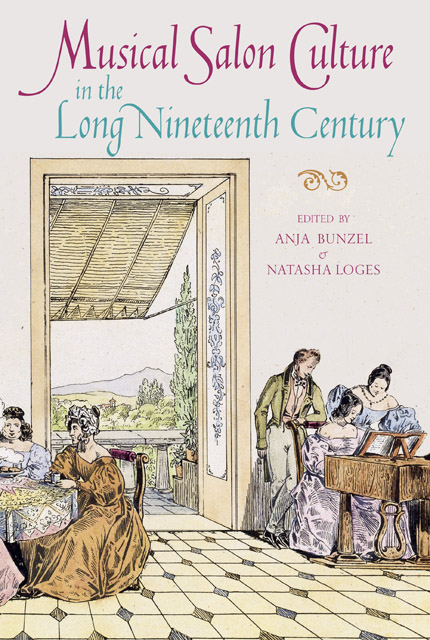4 - Reading, Singing, Becoming: The Mädchenlieder of Paul Heyse and Johannes Brahms
Published online by Cambridge University Press: 17 January 2023
Summary
The acts of reading and singing were indissolubly wedded in salon culture. The authors whose works were read silently when alone, or declaimed aloud for guests, were often the same whose lyrics were sung at drawing-room pianos. What expressive possibilities might have been created by this synergy between the printed and the sung word? How did these interlinked cultural objects encode – or possibly subvert – wider aesthetic, social and moral values, particularly for women? This chapter considers these questions through the works of the once enormously popular author Paul Heyse (1830–1914), whose writings at once fulfilled and challenged expectations during the second half of the nineteenth century. Among Heyse’s fans was his contemporary, the composer Johannes Brahms, who frequently set Heyse’s poems to music aimed at female performers in private settings. Brahms’s late Heyse setting ‘Mädchenlied’ Op. 95 no. 6 (1883–84) in particular seems to offer women a chance, through individual interpretative choices, to present an unfamiliar, daring persona, transforming the salon into what has been termed a ‘place of emancipation’.
Heyse and Brahms became friends in 1873, by which point the writer had enjoyed considerable popular success for around twenty years. Heyse was a man of tremendous personal attraction. Heyse’s and Brahms’s mutual friend Max Kalbeck quoted the singer Georg Henschel’s recollection of Brahms thus: ‘Heyse was … one of the most charming of men … He was handsome, and that too, this exceedingly delightful talent! I hardly know any man who lit up the room he entered, like he did.’ A keen music-lover, Heyse regularly attended concerts in Munich at which another mutual friend, the conductor Hermann Levi, performed Brahms’s works, and they would all socialise together afterwards. Like Brahms, Heyse was an extremely successful professional creative artist. His oeuvre embraced a staggering 170-plus novellas, numerous dramas, eight full-length novels and several volumes of translations. His work was available in English from as early as 1867. Brahms was one of many readers who adored Heyse’s work; he declared that ‘a new novella by Heyse always means a day of celebration for me. I don’t read something like that just once; it lies by me for weeks and I read it constantly.’ The critic Eduard Hanslick, a close friend of Brahms, wrote to Heyse: ‘I cannot imagine the time in which your novels will no longer be read.’
- Type
- Chapter
- Information
- Musical Salon Culture in the Long Nineteenth Century , pp. 65 - 76Publisher: Boydell & BrewerPrint publication year: 2019



